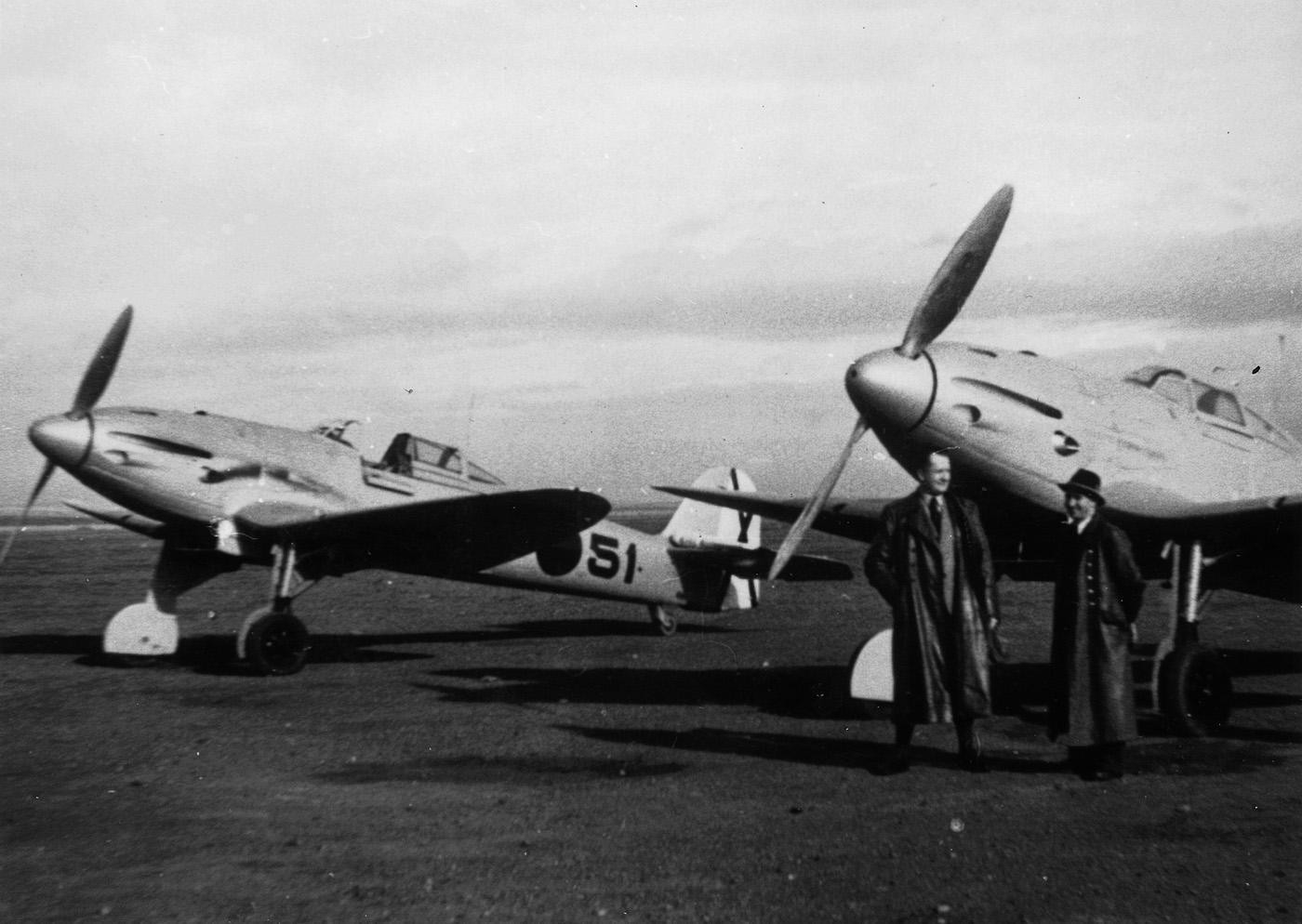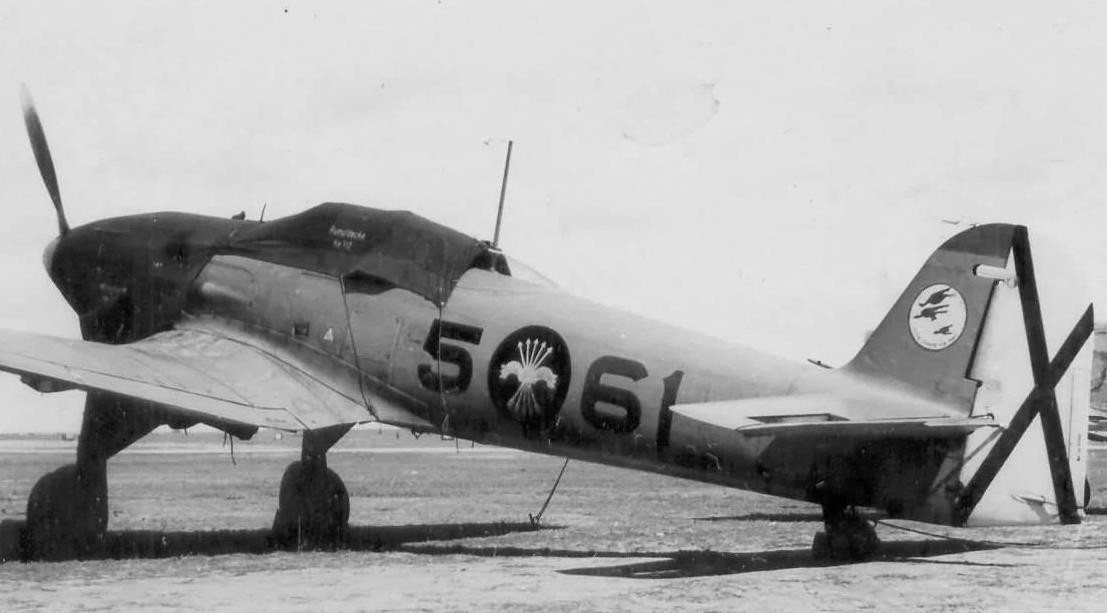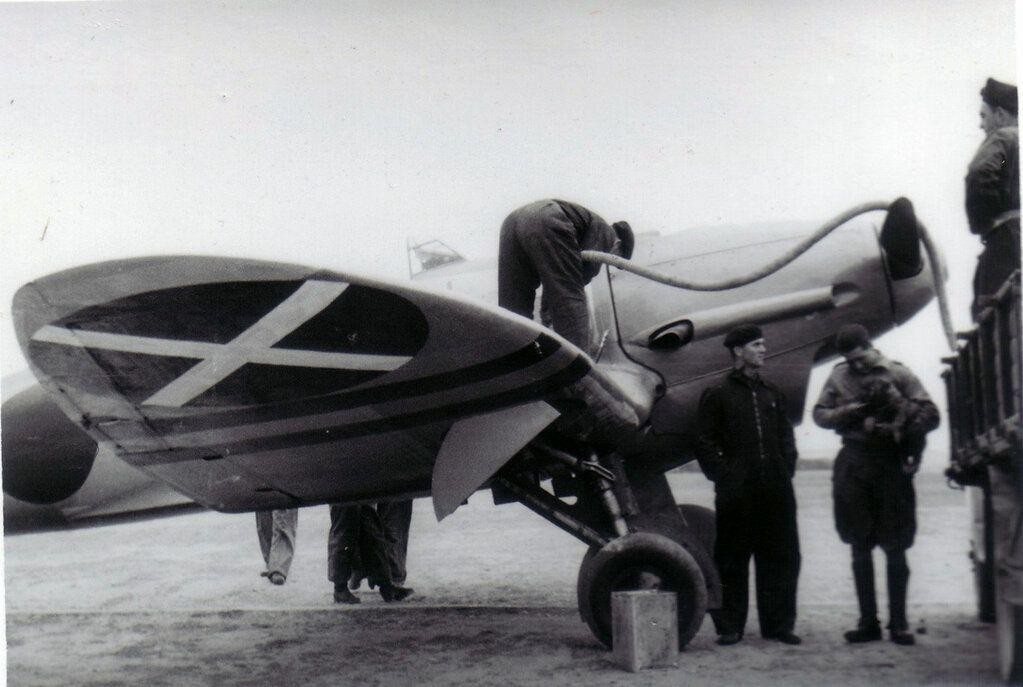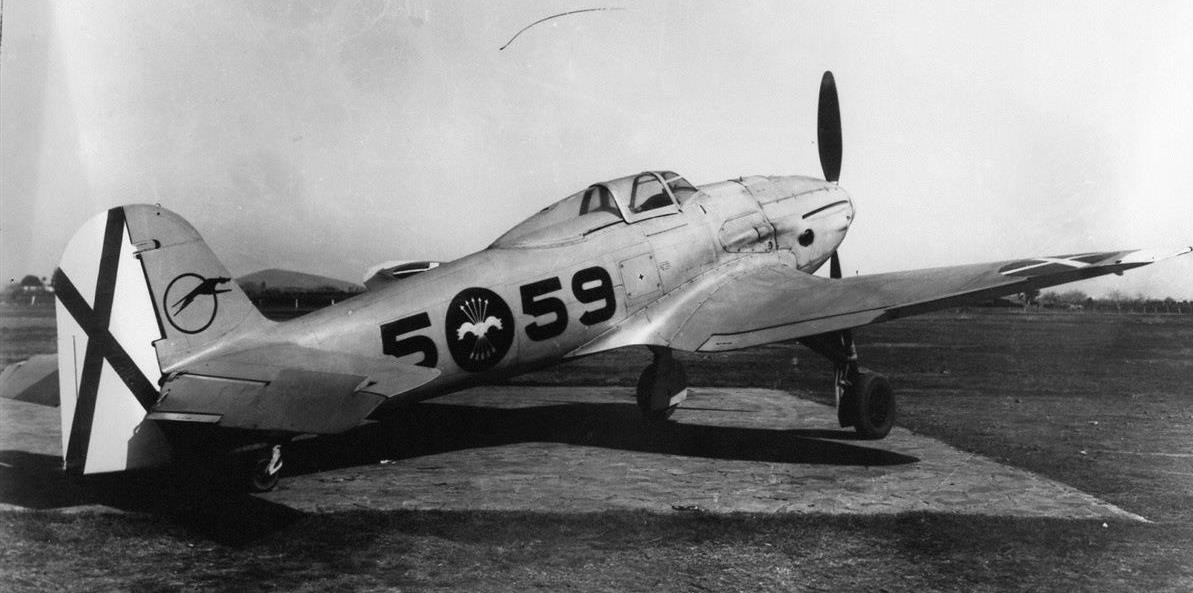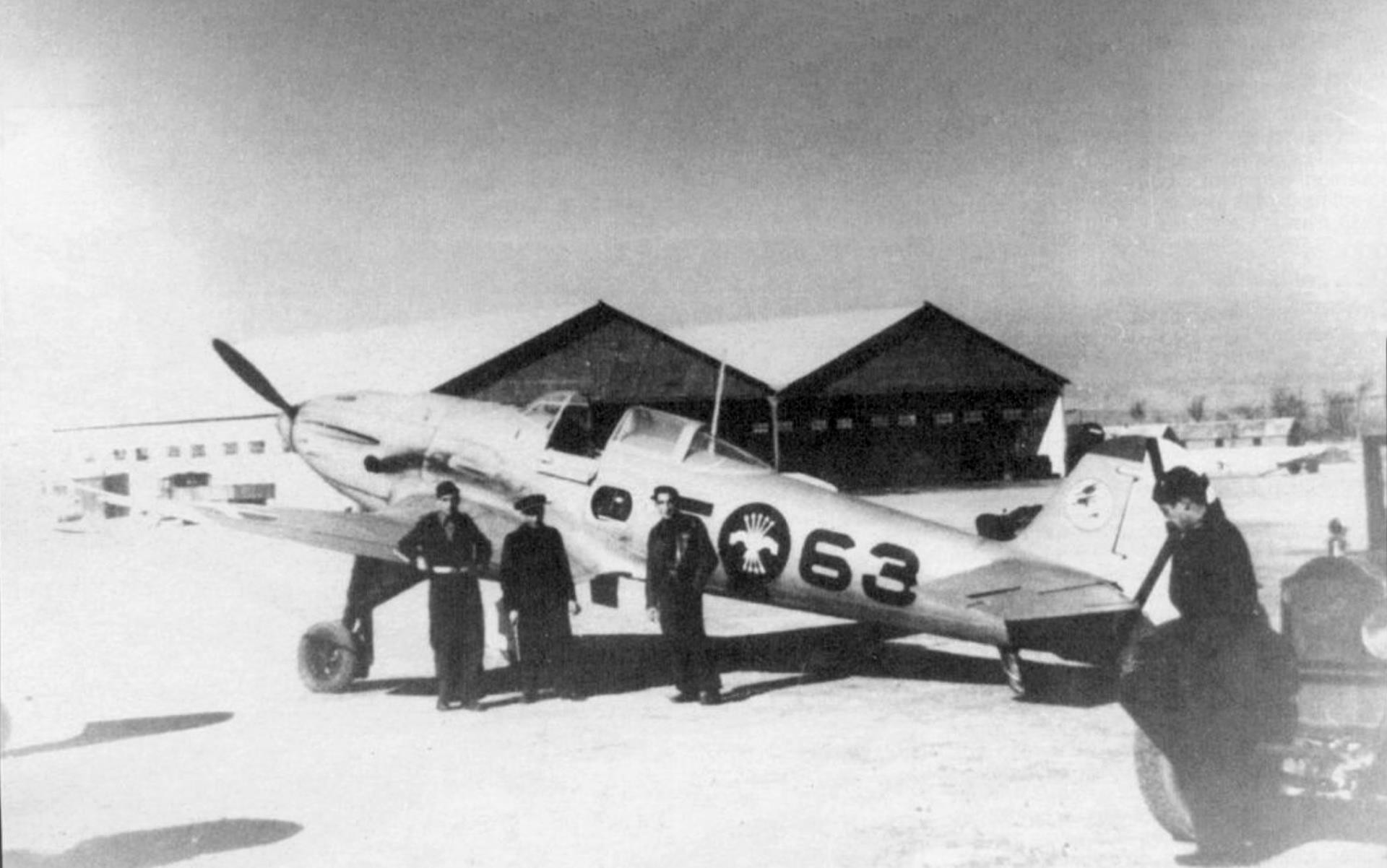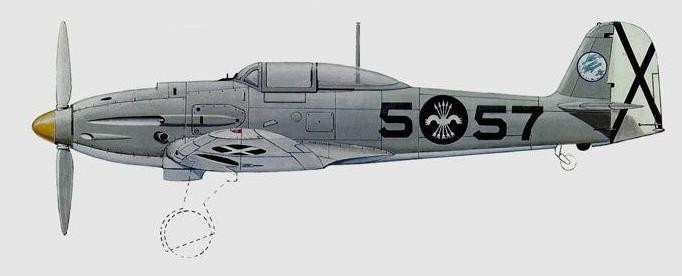In early December, four He 112 fighters arrived in the Spanish port of Cadiz, from where they were taken to the Tablada airfield near Seville. The planes were included in the 88th fighter squadron of the Condor Legion, which consisted of German volunteers and armed with German weapons. The Heinkel turned out to be the only cannon fighter not only in the legion, but in the entire Francoist aviation. Therefore, they decided to use it as an attack aircraft against ground targets. Together with Junkers Ju 87A and Henschel Hs 123 dive bombers, it began to strike at republican armored vehicles, field fortifications and artillery positions.
At the beginning of 1937, the Kanonenvogel took part in the battles on the Harama River. On March 16, an attack aircraft under the control of Oberleutnant Wilhelm Baltasar completed his most successful sortie. On that day, he attacked an armored train at the Sesenya station. From the third approach, Belshazzar managed to hit the ammunition rack in one of the armored cars. A powerful explosion blew the car to smithereens and caused the detonation of shells on a nearby armored area. As a result, the composition was completely destroyed. On the way back, the pilot shot the remnants of ammunition at the republican tank and also disabled it.
After this incident, Baltasar was appointed commander of an experimental assault unit, which consisted of three Heinkel He 45 biplanes and a Kanonenfogel. In June, the lunit fought on the northern front, supporting the advance of the Francoist troops on Bilbao. Then, in early July, it was returned to the central front, near Toledo. The 112 was then piloted by non-commissioned officer Max Schulze. For 10 days of fighting, he reported the destruction of three republican armored vehicles.
The fighting career of the “cannon bird” ended on July 19th. During the landing approach, the engine suddenly jammed at the plane. Schulze tried to make it to the gliding runway, but as a glider the Heinkel was too heavy. The forced landing ended with the fuselage of the Kanonenfogel breaking in half. Surprisingly, the pilot was not injured, but the car had to be written off.
Spanish nationalists (francists) purchased 19 Heinkels the B-1 and B-2 versions, which differed in engines. The B-1 had a Jumo 210E carburetor, and the B-2 had a Jumo 210G with direct fuel injection into the cylinders. The first two arrived in November 1938, and the rest in early January 1939. Of these, a new fighter group (Grupa de Casa 5-G-5) was formed, consisting of two squadrons, under the command of Comandante Jose Munoz Jimenez. The group was staffed by experienced pilots who had previously flown Fiats CR-32s and Heinkel He-51s.
The aircraft arrived disassembled and assembled by German mechanics. They retained the Germanic light gray color. As elements of quick identification on the machines of the first squadron, the spinners of the propellers and the tips of the keels were painted red, and on the second squadron - yellow. In addition, Franco emblems - a yoke and crossed arrows - were painted over the fuselage identification marks. The aircraft received tail numbers from 5-52 to 5-69.
The retraining of the Spaniards for the new technique went quickly and without problems. The instructors were pilots who had previously flown He 112 prototypes.
On January 17, the group flew to the Leon airfield and took up combat duty. At first, the Heinkels, together with the Fiats, carried out patrols along the front line. By that time, the outcome of the civil war was already a foregone conclusion. The Francoists launched a large-scale offensive in Catalonia, quickly pushing the Republicans to the French border, and their aircraft seized air supremacy. The Republican Air Force was greatly weakened, and there were few worthy opponents for fighters with black circles.
Nevertheless, already on January 19, the He 112 scored its first and only air victory in Spain, shooting down a Republican I-16. Success was achieved by Captain Garcia Prado. And two days later, the Republicans managed to "equalize the score." Lieutenant Luciano Tabernero Herero in the Super Mosca (I-16 type 10) shot down the new Heinkel, which became the only combat loss among aircraft of this type in the Spanish war.
Heinkel pilots no longer encountered Republican aircraft in the air. Since the beginning of February, they have been reoriented to other tasks. He 112 began to fly reconnaissance and attack enemy troops and railway facilities. The 20mm guns proved to be very effective against locomotives and light armored vehicles.
On February 6, the fighting in Catalonia stopped. The remnants of the Republican troops went to the territory of France. And on February 21, the Francoists held in Barcelona - the capital of the province - a major military parade with the participation of all branches of the armed forces.
The highlight of the parade was the flight over the main square of the city of squadrons of Fiats and Heinkels, lined up in the shape of the letters FET (an abbreviation of the official name of the Francoist party - Falanga Espanola Tradicionalista).
In early March, the 5-G-5 air group was transferred to the Madrid area. Planes often appeared over the city, but there were no encounters with an air enemy. On March 28, during the next patrol flight, the pilots received an order by radio to return to the airfield. The war is over, the republican government has capitulated.
By an evil irony of fate, the first days of peace turned out to be more tragic for Heinkel pilots than the months of the war. Already on March 29, Lieutenant Rogelio Garcia de Juan, performing aerobatics at low altitude, lost control and crashed into the ground. And soon Captain Garcia Prado, during a training air battle, fell into a flat tailspin and died under the wreckage of his aircraft.
In the summer of 1939, the remaining Heinkels were brought into one squadron at number 27 and sent to Morocco, a Spanish colony in Northwest Africa. In 1940, the aircraft received tricolor camouflage and new identification marks - red and yellow circles on the wings.
Over the next three years, Spanish pilots in Africa had to "fight" only with heat, sandstorms and equipment failures. But when, on November 8, 1942, the Anglo-American troops launched Operation Torch - landing troops in Algeria and French Morocco, the Spaniards had to remember their air combat skills. The fact is that the Americans were not going to reckon with the neutrality of Spain and from the very first minutes of the operation they constantly violated the airspace of Spanish Morocco. Many times Heinkels and Fiats took off to intercept, but their pilots only simulated attacks. The Spanish government, not wanting to aggravate relations, gave the order not to open fire.
This continued until March 3, 1943, when an incident occurred that almost provoked a war between the United States and Spain. On that day, a group of Lightnings, numbering 11 vehicles, once again violated the border. Soon she was overtaken by the lone "Heinkel" of Lieutenant Miguel Entrena, who took off on alarm. It is not known whether the lieutenant acted on his own initiative or whether he received a secret order from his superiors to teach a lesson to the insolent Yankees, but, be that as it may, he attached himself to the tail of one of the Lightnings and fired a cannon burst. The left engine of the twin-engine fighter flared up.
The rest of the Americans, already accustomed to the fact that the Spanish pilots never shoot, were clearly confused. It seems that they did not even realize that only one Heinkel attacked them. The Lightnings hurriedly dropped their external tanks and rushed off at full throttle over the border line. A downed fighter with a long tail of black smoke slowly “pulled” after them. Entrena could have finished off the intruder, but instead he approached the American almost closely and gestured through the cockpit glass for him to jump or sit down on the emergency. However, the Lightning pilot was stubborn. On a burning plane, losing height, he nevertheless crossed the border river Melilla and “flopped”, without releasing the landing gear, on the eastern, Algerian coast.
The fuel tanks dropped by the Lightnings were picked up by the Spanish soldiers on the same day as evidence that the battle took place over their territory. But the Americans were not interested in formalities. They were burning with the desire for revenge. The next day, more than 20 Lightnings made an apparently provocative low-altitude overflight of the Nador airfield, where the Heinkels were based. However, there was no battle. The Spanish pilots, having received the strictest order from Madrid the day before, "sat out" on the ground. They were allowed to take off only if shells and bombs rained down on them. But the American pilots did not dare to such "chaos". As a result, the war was avoided, and the incident was settled diplomatically. The Americans promised to continue not to violate the air borders of Spain and its colonies. True, in the future, aircraft with white stars sometimes appeared over Morocco, but this was due only to pilot errors and it did not come to firing.
Meanwhile, "Heinkels" continued to suffer losses due to accidents and disasters. In 1941-46, three planes crashed, two pilots died. A few more cars had to be written off due to engine wear and lack of spare parts. By early 1947, eight He 112s remained in service.
The following year, the “Moroccan” squadron was re-equipped with the “new” HS-132L biplanes (“Fiats” CR-32, built in the 40s in Spain under an Italian license), and the Heinkels were transferred to the flight school in Moron. In the summer of 1952, the last two machines were still flying there, but they were soon transferred to the category of training aids.
| Type |
Werk.Nr |
Registration |
History |
|
|
|
Delivered to Condor Legion in December 1936 |
|
|
|
Delivered to Condor Legion in December 1936 |
|
|
|
Delivered to Condor Legion in December 1936 |
|
|
|
Delivered to Condor Legion in December 1936 |
| Type |
Werk.Nr |
Registration |
History |
|
|
5-52 |
|
|
|
5-53 |
|
|
|
5-54 |
|
|
|
5-55 |
|
|
|
5-56 |
|
|
|
5-57 |
|
|
|
5-58 |
|
|
|
5-59 |
|
|
|
5-60 |
|
|
|
5-61 |
|
|
|
5-62 |
|
|
|
5-63 |
|
|
|
5-64 |
|
|
|
5-65 |
|
|
|
5-66 |
|
|
|
5-67 |
|
|
|
5-68 |
|
|
|
5-69 |
|
|
|
|
|
